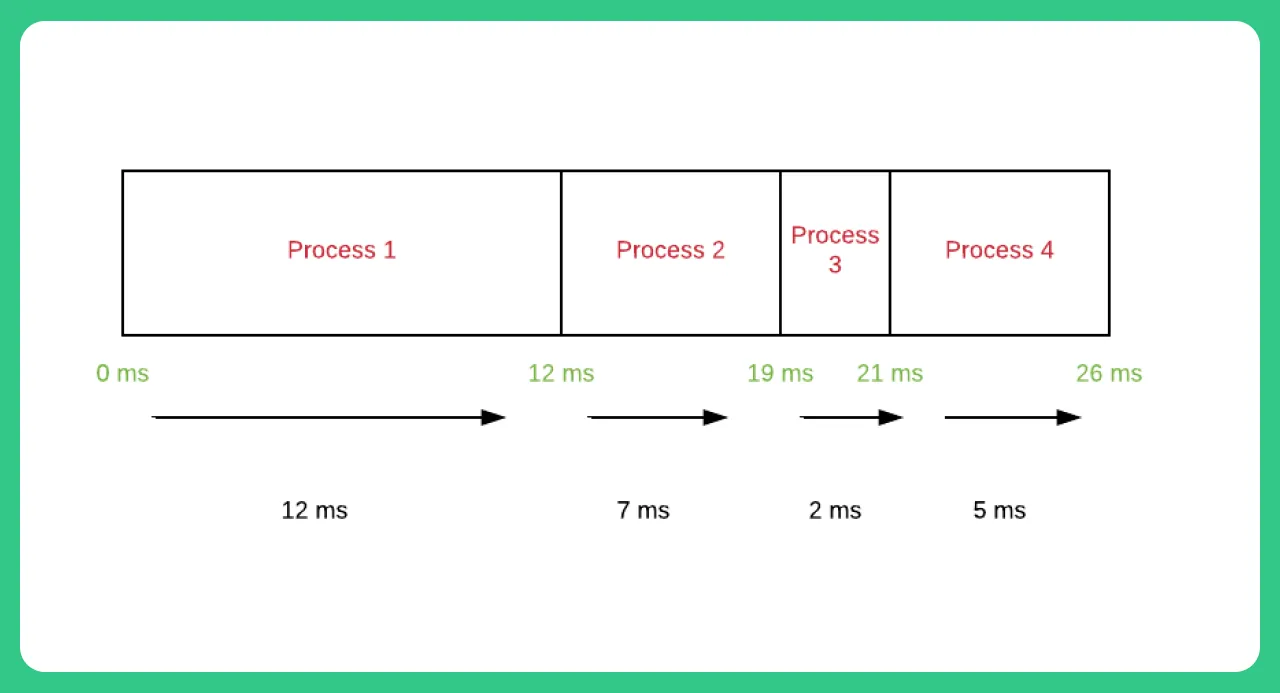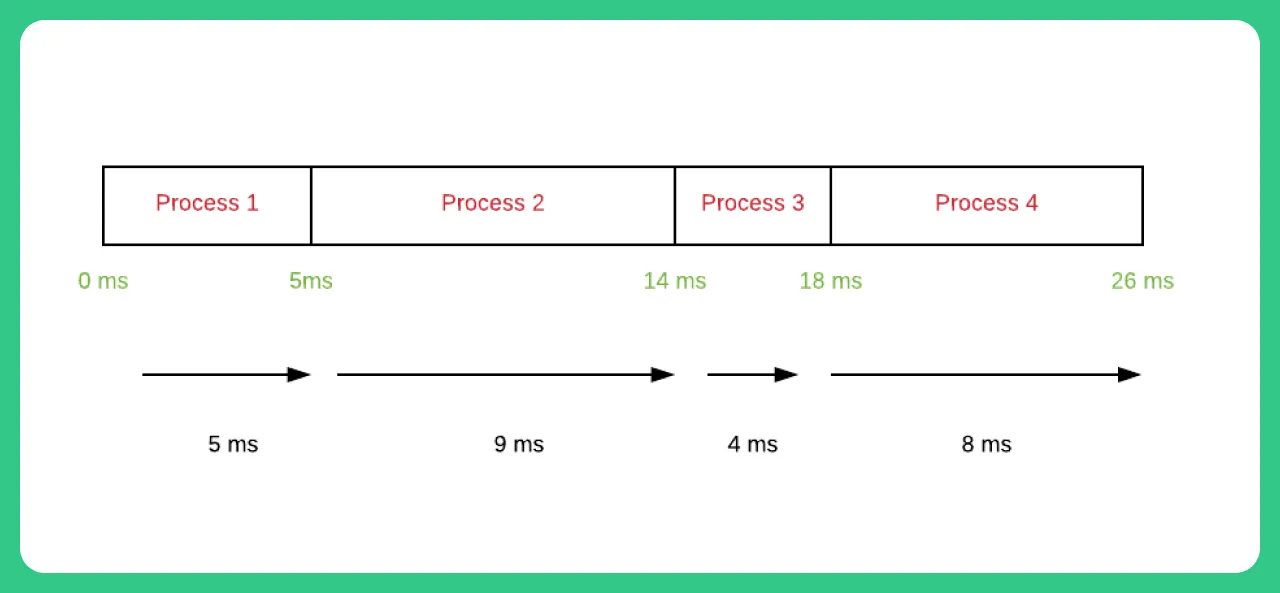0
Notifications Mark All Read
- Login
- Get Prime
FCFS Scheduling Algorithm in Operating System
What is First Come First Served Scheduling Algorithm in Operating System?
There are various scheduling algorithm in Operating System but today we will learn about FCFS(First Come First Served) scheduling algorithm in operating system. Here we learn from basic knowledge to and various effects in it so you understand the topic as efficiently as possible.

First Come First Served Scheduling Algorithm in Operating System
This is the most basic algorithm in Operating System, as the name suggests, first come first serve (FCFS) the process which enters the system first gets the CPU time first.
Consider the following scenario –
Lets say you’re waiting at a railway station’s ticket counter at the front of the queue the person who arrived first will be given chance to buy the ticket, and you will have to wait for your turn until all the people in front of you in the queue or those who have arrived earlier have bought tickets.
These are the traits of FCFS algorithm –
- It is parallel to how FIFO in stack is
- Process which arrives firsts gets CPU time first
- It is a non preemptive type of algorithm
Let us try to understand FCFS Scheduling with the help of an example –
Note – If order and arrival time is not given then consider the order as is and arrival time to be 0 for all the processes.
[table id=241 /]
- Turn Around Time = Completion Time – Arrival Time
- Waiting Time = Turnaround time – Burst Time
Lets make a gantt Chart for this first.

Waiting time –
- P1 waiting time – 0ms
- P2 waiting time – 12ms
- P3 waiting time – 19ms
- P4 waiting time – 21ms
Thus, average waiting time – (0 + 12 + 19 + 21)/4 = 13ms
Turn around time – Time when process entered the system and when its out of the system
- P1 turn around time – (12 – 0) ms
- P2 turn around time – (19 – 0) ms
- P3 turn around time – (21 – 0) ms
- P4 turn around time – (26 – 0) ms
Average turn around time (12 + 19 + 21 + 26)/4 = 19.5 ms
Disadvantages of FCFS Algorithm
- Since, its a non preemptive algorithm thus, there is no intelligence applied and no priority can be given to processes.
- If critical system process arrives it may have to wait for a process like calculator.
- Waiting time may get too high, along with the turn around time.
- Causes convoy effect
What is convoy effect?
FCFS may suffer from the convoy effect if the burst time of the first job is the highest among all. As in the real life, if a convoy is passing through the road then the other persons may get blocked until it passes completely. This can be simulated in the Operating System also.
If the CPU gets the processes of the higher burst time at the front end of the ready queue then the processes of lower burst time may get blocked which means they may never get the CPU if the job in the execution has a very high burst time. This is called convoy effect or starvation.
Let us take one more example a little more complicated.
In the previous example all the processes had arrived at the same time however, in a real time environment this is hardly the case.
[table id=242 /]
In this case the Gantt Chart looks like

The 2 seconds in the start can be avoided as the system only starts at 2 ms when the first process arrives.
Here have close watch on the arrival time for each process –
arrival time –
- P1 arrival time – 0 ms
- P2 arrival time – 4 ms
- P3 arrival time – 6 ms
- P4 arrival time – 13 ms
Waiting time –
- P1 waiting time – 0 ms
- P2 waiting time – (5 – 4) = 1 ms
- P3 waiting time – (14 – 6) = 8 ms
- P4 waiting time – (18 – 13) = 5 ms
Thus, average waiting time – (0 + 1 + 8 + 5)/4 = 3.50ms
Turn Around time –
- P1 turn around time – 5 ms
- P2 turn around time – (14 – 4) = 10 ms
- P3 turn around time – (18 – 6) = 12 ms
- P4 turn around time – (26 – 13) = 13 ms
Thus, average Turn Around time – (5 + 10 + 12 + 13)/4 = 12.5 ms
Prime Course Trailer
Related Banners
Get PrepInsta Prime & get Access to all 200+ courses offered by PrepInsta in One Subscription
Get over 200+ course One Subscription
Courses like AI/ML, Cloud Computing, Ethical Hacking, C, C++, Java, Python, DSA (All Languages), Competitive Coding (All Languages), TCS, Infosys, Wipro, Amazon, DBMS, SQL and others

 0
0



Login/Signup to comment